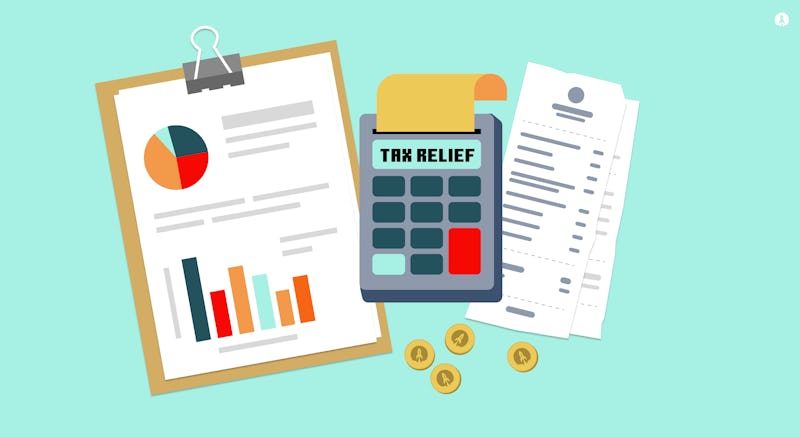
Research and Development (R&D) Tax Relief
It’s not too often that most of us would use the words “tax” and “good news” in the same sentence, but there we have it, we’ve just done it! We’re starting the new year by sharing some good news for entrepreneurs, innovators, disruptors and anyone who wants to bring their idea to life in 2024. The good news is that there are tax credits for organisations working on certain innovations within their core business focus.
Which projects count towards the scheme?
Research and development tax credits allow organisations to claim back tax on innovative projects related to advancement, usually within your businesses core focus.
The advance has to be focussed on certain areas:
- scientific
- technological
- professional
And does not include areas like:
- arts
- humanities
- social sciences, including economics
(However there are other grants available from the government specifically aimed at these areas).
You can find full details of the Research and Development tax relief scheme here. But if you’re unsure as to what actually fulfils the criteria, we have written some guidance below.

What is the criteria and how have our customers qualified for the credit in the past?
The specific guidance from the government is that you need to cover the following for each ‘advance’ as part of your submission:
- looked for an advance in the field
- had to overcome the scientific or technological uncertainty
- tried to overcome the scientific or technological uncertainty
- could not be easily worked out by a professional in the field
Let's take a look at each of these in isolation.

1. Advances in the field
This is typically where we look for ways we’ve used technology to make a specific task easier, more efficient or created something completely new entirely. It’s wide ranging but some broad examples we’ve might come across could be:
- Packaging and automating manual processes through the use of bespoke software or AI
- Combining existing technologies to create something to be used in a new way
- Solving a problem with technology which was previously an ‘offline’ task
- Coming up with a solution for a completely new problem potentially introduced by another recent advance in technology, discovery or world event.
It’s not essential you’re the first to be developing the idea as long as it isn’t already widely used or established. For example, if there are small scale companies working in the same area, it doesn’t preclude your work from still being innovative or valid in this context.
2. Show there was a scientific or technological uncertainty
This is a process we go through with all of our customers as part of the early stage of our working relationship. We’ll pick out areas which we haven’t tackled before, aren’t sure of the best approach or if it’s even possible. It’s important that there isn’t an already well established solution that works well unless you can justify very clearly how your new method is better or more appropriate.

3. Explain how you tried to overcome the scientific or technological uncertainty
The focus here is what we like to call ‘spikes’. We employ minimal code builds to prove outcomes as quickly as possible, including documententing in detail the steps we took to actually solve the problem. In terms of proof for your submission, some technical details here are great but you don’t need to expose every detail or provide code samples. It’s just as valid to fail in your attempts here as long as the process and work is documented well - in fact, failing shows that the approach was truly R&D focused work.
4. Show that a professional in the field could not work this out
This is all about reinforcing that your solution requires your company's employees specific expertise to come up with. Basically if people who work outside of your field could easily come up with your solution (and prove it works) then it probably isn’t valid in this context.
An example
“An application which orders your shopping list based on the layout of the store”
Why would this not qualify?
It’s not necessarily a bad idea, but has been done by some major supermarkets already and there aren’t really any actual technological advancements here. You may be solving a problem for people but you’re not advancing in any of the key fields required.
How could this be innovative?
If you took your idea further and started to employ some more cutting edge technology, you’d be pushing further into the realms of innovation. For example, you could use bluetooth beacons and barcode scanning to learn the positions of items within stores to build up virtual store and product layouts. This then would be removing the need for staff to manually update some backend system with store layouts every time something changed. You could take this a step further by feeding the gathered information into a machine learning algorithm to work out optimal layouts, customer habits etc.
While this is far from a validated or well thought out idea, it hopefully gives an example of what we’d consider might meet the criteria for an R&D tax relief claim. Because of the nature of innovation there unfortunately isn’t a perfect template but if something feels ‘difficult but possible’ you might be on the right track!

How we take advantage of the tax R&D credits at Rocketmakers?
Each year at Rocketmakers we go through the process of looking back at everything we’ve worked on and we build a comprehensive list of all the advances we’ve made as part of our work.
Our own tools, components and systems are often pushing the boundaries of software development and design, so this tax support means we can get some relief on the investment we make.
A good example is our own technology called Beam, https://beam3d.co, which enables 3D content management. This was supported by an R&D grant and has a patent pending in the dynamic 3D space.
How does Rocketmakers help our clients with R&D tax credits?
We’ve also helped our clients with this process by providing both an initial analysis of their project as well as ongoing flagging of areas we think may qualify for R&D tax relief.
This can include some difficult discussions where people may believe an idea is innovative but once we start delving into the details, it can turn out that a very similar concept has been done before and has covered much of the potential R&D we could carry out.
Even though this might rule out R&D relief on some aspects, it’s not necessarily a bad thing as it normally means we can hit the ground running on a project with pre-existing libraries and functionality.
We also help contribute to the application itself when necessary, providing technical detail when needed.
